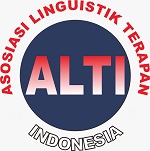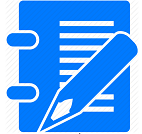An Analysis of Early Childhood Bilingual Program Implementation at Happy Hive Kindergarten, Malaysia
DOI:
https://doi.org/10.33394/jollt.v13i4.16176Keywords:
Early childhood education, Language development, Bilingual program, Language curriculumAbstract
In the era of globalization, proficiency in international languages is a key factor for competitiveness and cross-cultural collaboration. Malaysia stands out as a significant global example by integrating bilingual education into the National Preschool Standard Curriculum (Kurikulum Standard Prasekolah Kebangsaan—KSPK) from the preschool level. This study analyzes the regulations, implementation, and challenges of the bilingual program at Happy Hive Malaysia as a learning model relevant to international contexts.Using a qualitative case study approach, data were collected through interviews with two educators, participatory observations, and documentation, then analyzed thematically. The main findings reveal that KSPK provides a strong foundation for early childhood language education, while Happy Hive successfully implements a balanced bilingual approach supported by interactive methods and educational media. The challenges encountered—including variations in children’s language proficiency, speech delays, and limited resources—were addressed through teacher training and adjustments to teaching methods. This study underscores the importance of curriculum integration, teacher competence, and child-centered methods for the success of bilingual programs. Policy recommendations include strengthening regulations, providing continuous teacher training, and enhancing support for bilingual resources and media. For practitioners, adaptive strategies and innovative learning media are suggested to improve the effectiveness of bilingual education, positioning Malaysia’s experience as a valuable reference for other countries.
References
Affandi, M. I. (2023). Assessment and evaluation in early childhood learning.
Amalia, I., Dewi, F., & Justicia, R. (2024). The use of bilingual sound print media to develop children’s English vocabulary. 3(1).
Annisa, A. (2020). Analysis of social development in bilingual children in the 21st century. Mitra Ash-Shibyan: Journal of Education and Counseling, 4(1), 31–46. https://doi.org/10.46963/mash.v4i01.223
Auliyah, D. D., Habibah, S. R. N., & Faelasup, F. (2024). Analysis of the influence of lesson plans on learning quality. Journal of Educational and Social Sciences (SINOVA), 2(3), 203–216. https://doi.org/10.71382/sinova.v2i3.150
Azzahra, N., Muqodas, I., & Justicia, R. (2024). The effect of flashcards on developing psychological well-being in children aged 5–6 years. Jurnal Pelita PAUD, 9(1), 1–8. https://doi.org/10.33222/pelitapaud.v9i1.3907
Baruta, Y. (2023). Learning assessment in the Merdeka Curriculum: Early childhood, basic, and secondary education. P4I Publisher.
Chamorro, G., & Janke, V. (2022). Investigating the bilingual advantage: The impact of L2 exposure on the social and cognitive skills of monolingually-raised children in bilingual education. International Journal of Bilingual Education and Bilingualism, 25(5), 1765–1781. https://doi.org/10.1080/13670050.2020.1799323
Creswell, J. W., & Creswell, J. D. (2017). Research design: Qualitative, quantitative, and mixed methods approaches. Sage Publications.
Damayanti, D. R. A., & Ridwan, A. (2024). Social change and education in the role of Islamic education teachers in the digital era. 2(2).
Dasopang, M. D., Lubis, A. H., & Dasopang, H. R. (2022). How do millennial parents internalize Islamic values in their early childhood in the digital era? Al-Ishlah, Journal of Education, 14(1), 697–708. https://doi.org/10.35445/alishlah.v14i1.1062
Dewi, S. A., Sopiah, S., & Rachman, I. F. (2024). The effect of bilingualism on the cognitive development of first-grade students at SDN Sukasenang. 2(2), 447–455.
Espinosa, L. M. (2015). Challenges and benefits of early bilingualism in the United States’ context. 2(1).
Ghani, R. B. A. (2020). Factors influencing the role of teachers in implementing the National Preschool Curriculum Standard (KSPK) in Malaysia.
Hansell, K., & Björklund, S. (2022). Developing bilingual pedagogy in early childhood education and care: Analysis of teacher interaction. 11(1), 179–203.
Haoning Mah, G., Hu, X., & Yang, W. (2021). Digital technology use and early reading abilities among bilingual children in Singapore. Policy Futures in Education, 19(2), 242–258. https://doi.org/10.1177/1478210320980575
Herisnawan, D., & Ningsih, T. (2024). Educational social interaction in learning development at SMP ZIIS Cilongok. Jurnal Riset Ilmu Pendidikan, 4(4), 6–12. https://doi.org/10.56495/jrip.v4i4.767
Hewitt, L., Ashokkumar, A., Ghezae, I., & Willer, R. (2024). Predicting results of social science experiments using large language models. Preprint.
Hidayat, H., Nurfadilah, A., Khoerussaadah, E., & Fauziyyah, N. (2021). Improving teacher creativity in early childhood learning in the digital era. Jurnal Pendidikan Anak, 10(2), 97–103.
Hukama, M. H., Damara, I., & Fauzi Rachman, I. (2024). Bilingual learning: Acquisition and development of second language on bilingual children’s cognitive ability. Journal of Social Humanities and Education Research, 3(1), 119–131. https://doi.org/10.56444/soshumdik.v3i1.1570
Ihwani, N. N., Ayu, M. P., Rahma, D., Caturiasari, J., & Wahyudin, D. (2023). Character education based on culture in facing globalization challenges. Jurnal Sinektik, 6(2), 145–154. https://doi.org/10.46244/visipena.v9i1.450
Insani, Himmah, S., Royani, A., & Fudhaili, A. (2024). Benefits, challenges, and strategies for bilingual children in Indonesian bilingual schools. Ukazh: Journal of Arabic Studies, 5(2), 127–138. https://doi.org/10.37274/ukazh.v5i2.949
Johari, A. Q., Mustaffa, F., Ali, H., & Seman, N. (2025). “I spy a sound in the jungle”: A digital approach to preschool children’s English language mastery. 2(1).
Kementerian Pendidikan Malaysia. (2017). National Preschool Curriculum Standard.
Khissoga, R. H. (2022). Training in the use of bilingual children’s storybooks to improve the quality of basic English teaching (a case study at RA Al-Hidayah 1 Pokaan Situbondo). 1(2).
Kultti, A. (2024). Globalising early childhood education (GECE). International Journal of Multilingualism, 21(1), 548–558. https://doi.org/10.1080/14790718.2022.2074013
Kusmarni, Y. (2016). Case study (John W. Creswell).
Listiani, N. K. M., Suwastini, N. K. A., Dantes, G. R., Adnyani, N. L. P. S., & Jayantin, I. G. A. S. R. (2021). YouTube as digital learning resources for teaching bilingual young learners. 2nd International Conference on Technology and Educational Science (ICTES 2020), Singaraja, Bali, Indonesia. https://doi.org/10.2991/assehr.k.210407.230
McLellan, J. (2022). Malay and English language contact in social media texts in Brunei Darussalam and Malaysia. Frontiers in Communication, 7, 810838. https://doi.org/10.3389/fcomm.2022.810838
Miles, M. B., & Huberman, A. M. (1994). Qualitative data analysis: An expanded sourcebook. Sage Publications.
Muawanah, S. (2023). Management of bilingual school programs at Islamic elementary schools. Tawazun: Journal of Islamic Education, 16(3), 645–656. https://doi.org/10.32832/tawazun.v16i3.14900
Ningsih, Y. L., & Taruna, R. (2021). Analysis of the influence of language and cognition on preschool children’s socio-emotional development. Jurnal Terapi Wicara, 4(1). https://doi.org/10.59898/jawara.v4i1.14
Nuri, A. (2024). Exploring bilingualism: Cognitive benefits and cultural challenges. Acta Globalis Humanitatis et Linguarum, 1(1), 71–81. https://doi.org/10.69760/aghel.024053
Nurjanah, S. (2022). Creating an enjoyable learning atmosphere through the question-and-answer method. Open Science Framework. https://doi.org/10.31219/osf.io/7cr5t
Pransiska, R. (2018a). A study of bilingual programs on early childhood cognitive development. Edukasi Journal, 10(2), 167–178. https://doi.org/10.31603/edukasi.v10i2.2409
Pransiska, R. (2018b). A study of bilingual programs on early childhood cognitive development. Edukasi Journal, 10(2), 167–178. https://doi.org/10.31603/edukasi.v10i2.2409
Putri, A., Muzakki, A. A., & Aulyana Putri, N. G. (2023). Implementation of early English bilingual programs to shape excellent generations in the globalization era. Incrementapedia: Journal of Early Childhood Education, 5(2), 1–7. https://doi.org/10.36456/incrementapedia.vol5.no2.a7708
Riyanti, A. (2020). Language learning theory. Tidar Media.
Saptadi, et al. (2024). Multilingual education: Theory and practice. Sada Kurnia Pustaka.
Sattler, P. L., Paceley, M., Byers, K., Mulkey, Z., & Mendenhall, A. (2022). Lost in translation: Bilingual parent coaches’ experiences implementing an un-adapted early childhood intervention with non-English speakers. Global Implementation Research and Applications, 2(1), 12–21. https://doi.org/10.1007/s43477-022-00037-4
Siregar, M., Indryani, I., Asmara, E. D., Sarniya, A., & Sulistiani, S. (2023). Language development assessment in early childhood education. Jurnal Usia Dini, 9(3), 375. https://doi.org/10.24114/jud.v9i3.55406
Situmorang, D. M., Binneka, I., & Azizah, N. (2025). Language acquisition in five-year-old children: A case study of phonology, morphology, syntax, and semantics aspects. 3. https://jicnusantara.com/index.php/jiic
Soto-Boykin, X. T., Larson, A. L., Olszewski, A., Velury, V., & Feldberg, A. (2021). Who is centered? A systematic review of early childhood researchers’ descriptions of children and caregivers from linguistically minoritized communities. Topics in Early Childhood Special Education, 41(1), 18–30. https://doi.org/10.1177/0271121421991222
Sulaiman, N. A. B., & Pransiska, R. (2024). Teachers’ strategies in developing early children’s reading ability. https://doi.org/10.24036/ijmurhica.v7i1.205
Taylor, I., & Taylor, M. M. (1990). Psycholinguistics: Learning and using language. Prentice Hall.
Yulianti, I., et al. (2025). Anthology of curriculum innovations in early childhood education: A development of curriculum innovation from early childhood educators. Edu Publisher.
Yunidar, M. (2025). Language, culture, and society: A contemporary sociolinguistic perspective. Kaizen Media Publishing.
Downloads
Published
How to Cite
Issue
Section
Citation Check
License
Copyright (c) 2025 Tsabita Muthmainnah

This work is licensed under a Creative Commons Attribution-ShareAlike 4.0 International License.
License and Publishing Agreement
In submitting the manuscript to the journal, the authors certify that:
- They are authorized by their co-authors to enter into these arrangements.
- The work described has not been formally published before, except in the form of an abstract or as part of a published lecture, review, thesis, or overlay journal.
- That it is not under consideration for publication elsewhere,
- That its publication has been approved by all the author(s) and by the responsible authorities – tacitly or explicitly – of the institutes where the work has been carried out.
- They secure the right to reproduce any material that has already been published or copyrighted elsewhere.
- They agree to the following license and publishing agreement.
Copyright
Authors who publish with JOLLT Journal of Languages and Language Teaching agree to the following terms:
- Authors retain copyright and grant the journal right of first publication with the work simultaneously licensed under a Creative Commons Attribution License (CC BY-SA 4.0) that allows others to share the work with an acknowledgment of the work's authorship and initial publication in this journal.
- Authors are able to enter into separate, additional contractual arrangements for the non-exclusive distribution of the journal's published version of the work (e.g., post it to an institutional repository or publish it in a book), with an acknowledgment of its initial publication in this journal.
- Authors are permitted and encouraged to post their work online (e.g., in institutional repositories or on their website) prior to and during the submission process, as it can lead to productive exchanges, as well as earlier and greater citation of published work.
Licensing for Data Publication
-
Open Data Commons Attribution License, http://www.opendatacommons.org/licenses/by/1.0/ (default)
This work is licensed under a Creative Commons Attribution-ShareAlike 4.0 International License.
















